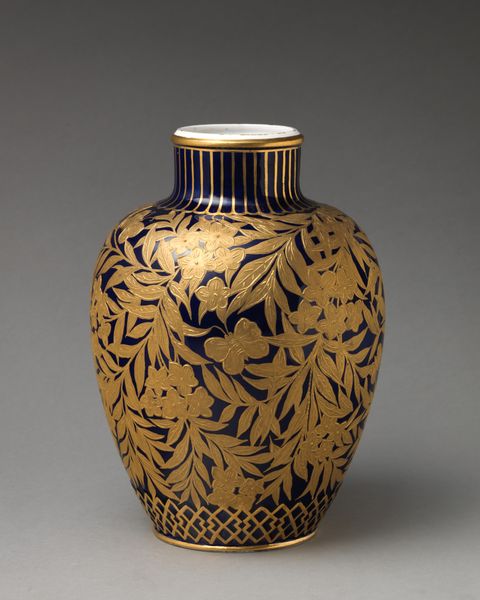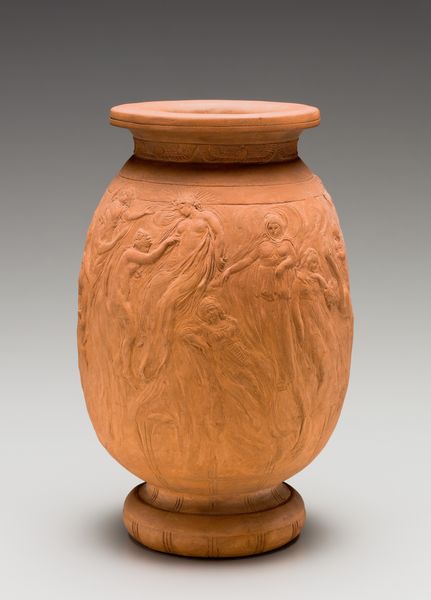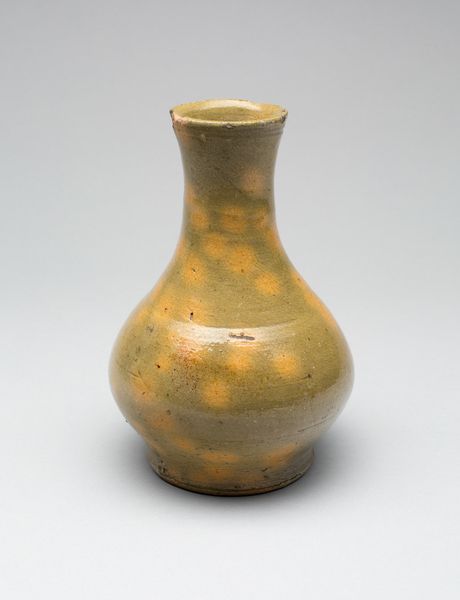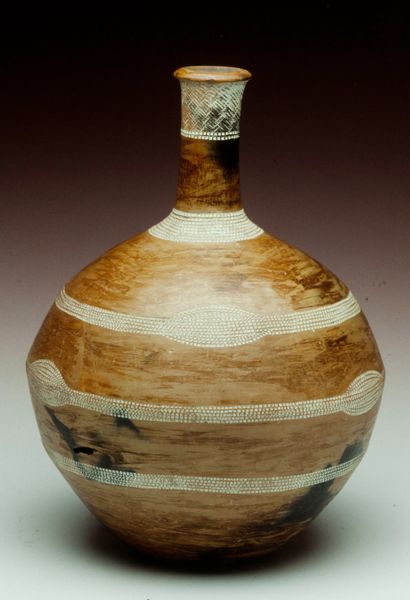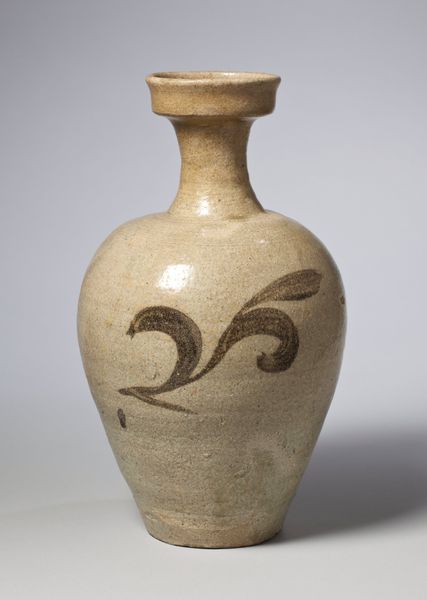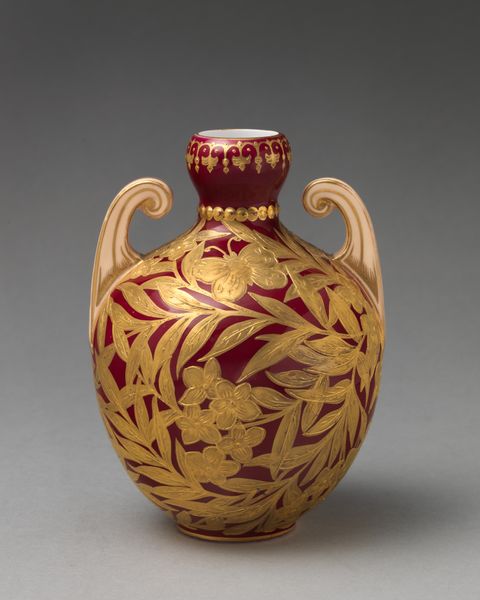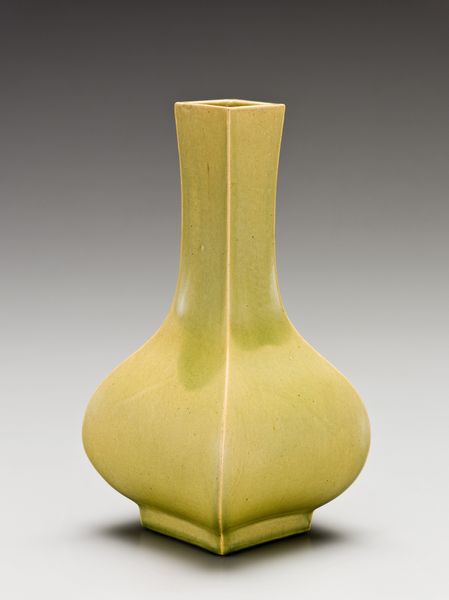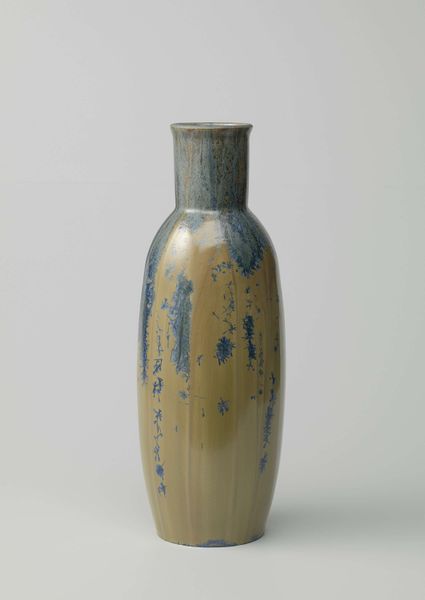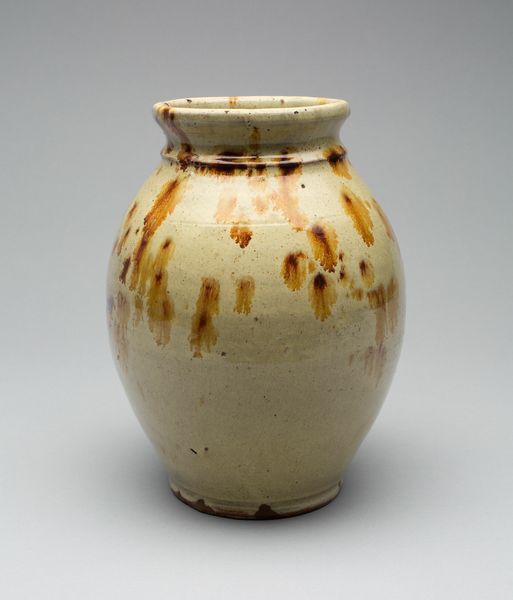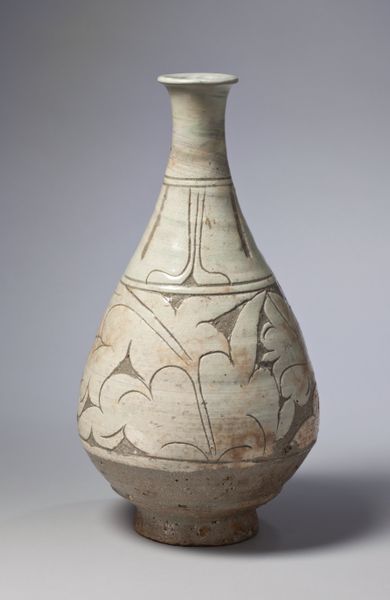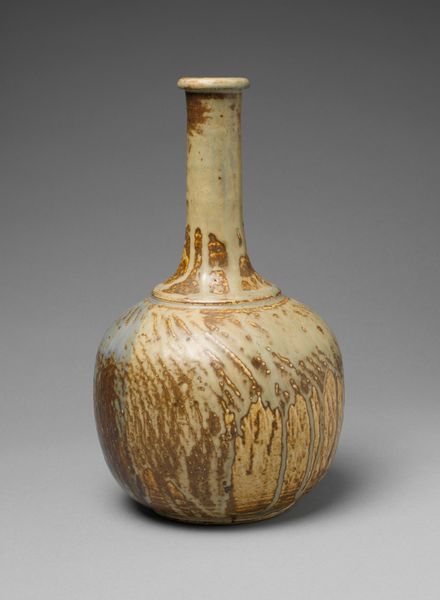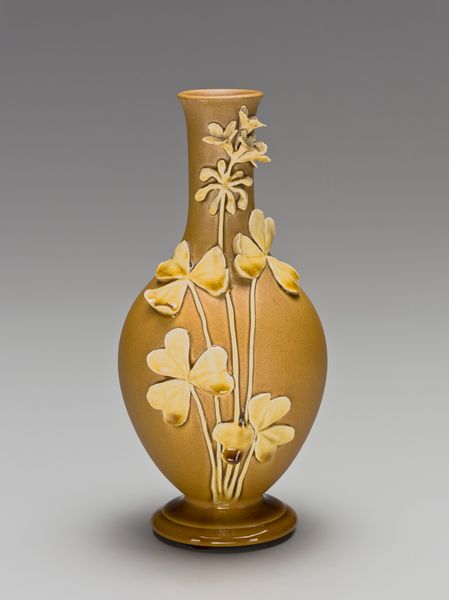
ceramic, porcelain, sculpture
#
ceramic
#
porcelain
#
sculpture
#
decorative-art
Dimensions: Height: 7 11/16 in. (19.5 cm)
Copyright: Public Domain
Curator: The "Vase," crafted from ceramic and porcelain between 1875 and 1885 by Haviland & Co., now resides here at The Metropolitan Museum of Art. What are your first impressions? Editor: There's something both soothing and unsettling about it. That muted color, the slightly awkward proportions—it gives off a feeling of faded grandeur, perhaps a commentary on bourgeois tastes. Curator: Let's deconstruct this further. The vase employs an interesting form, doesn't it? Notice the tension between the smooth, curved surfaces and the sharp, angular corners. It's not traditionally elegant; it's almost…striving. Editor: And what does that striving signify in the late 19th century? We're talking about a period grappling with rapid industrialization, class anxieties, and the burgeoning women's movement. Was this a piece for a newly-minted middle-class household eager to display taste and refinement, but failing somehow? Curator: It could also be read formally. Consider the placement of the butterfly relief: it interrupts the verticality, providing a focal point and contrasting texture. Editor: That butterfly—a symbol of transformation, perhaps of fleeting beauty? Or is it meant ironically here? Glued, dead on this vase, forever entombed. Given that its maker, Haviland & Co., was based in France but largely exported to the U.S., it must be placed within a wider network of industrial arts and its economic goals. Curator: A shrewd reading. I remain fascinated, though, by its visual construction; by how light interacts with its muted glaze, the subtle plays of shadow that shift with the viewing angle. Editor: I agree. But also consider how those shadows evoke a feeling of stagnation. If beauty cannot evolve beyond a domestic setting like this, does it really hold transformative potential at all? Curator: Indeed, a fitting inquiry with which to end. We’re each looking at it from our perspectives, contributing to a richer understanding of the artwork. Editor: Absolutely; let’s hope that we can inspire similar levels of inquiry into the intersections of culture, aesthetics, and broader histories.
Comments
No comments
Be the first to comment and join the conversation on the ultimate creative platform.
